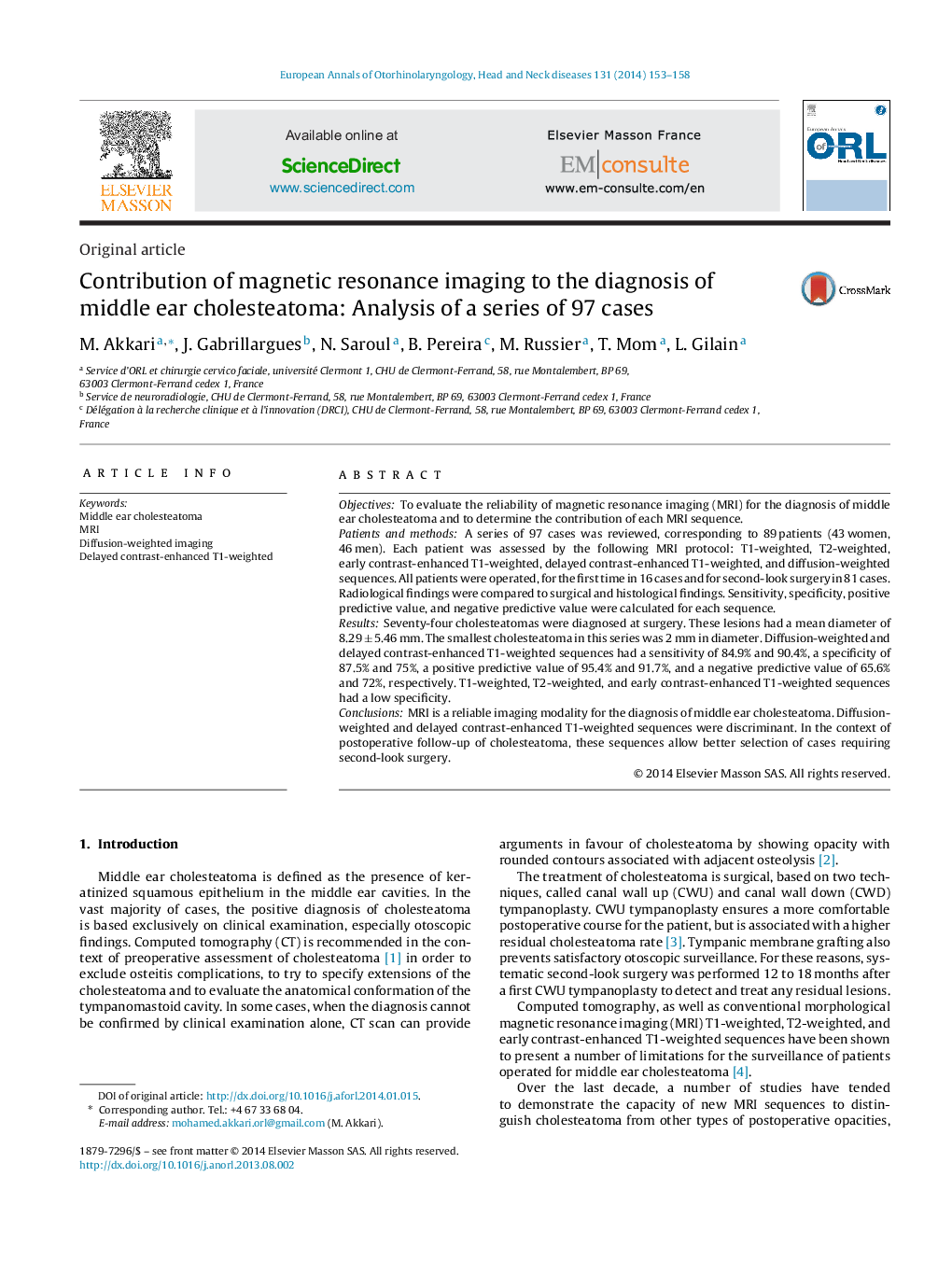| Article ID | Journal | Published Year | Pages | File Type |
|---|---|---|---|---|
| 4110078 | European Annals of Otorhinolaryngology, Head and Neck Diseases | 2014 | 6 Pages |
ObjectivesTo evaluate the reliability of magnetic resonance imaging (MRI) for the diagnosis of middle ear cholesteatoma and to determine the contribution of each MRI sequence.Patients and methodsA series of 97 cases was reviewed, corresponding to 89 patients (43 women, 46 men). Each patient was assessed by the following MRI protocol: T1-weighted, T2-weighted, early contrast-enhanced T1-weighted, delayed contrast-enhanced T1-weighted, and diffusion-weighted sequences. All patients were operated, for the first time in 16 cases and for second-look surgery in 81 cases. Radiological findings were compared to surgical and histological findings. Sensitivity, specificity, positive predictive value, and negative predictive value were calculated for each sequence.ResultsSeventy-four cholesteatomas were diagnosed at surgery. These lesions had a mean diameter of 8.29 ± 5.46 mm. The smallest cholesteatoma in this series was 2 mm in diameter. Diffusion-weighted and delayed contrast-enhanced T1-weighted sequences had a sensitivity of 84.9% and 90.4%, a specificity of 87.5% and 75%, a positive predictive value of 95.4% and 91.7%, and a negative predictive value of 65.6% and 72%, respectively. T1-weighted, T2-weighted, and early contrast-enhanced T1-weighted sequences had a low specificity.ConclusionsMRI is a reliable imaging modality for the diagnosis of middle ear cholesteatoma. Diffusion-weighted and delayed contrast-enhanced T1-weighted sequences were discriminant. In the context of postoperative follow-up of cholesteatoma, these sequences allow better selection of cases requiring second-look surgery.
